
Type and Archetype in Dreams
Introduction
Chris Beach, October 1, 2014

In all, we will look at the dreams of four individuals. The dreams of the first two individuals show how the Anima/Animus and the inferior or ‘Soul’ function are expressed in dream figures. The latter two cases demonstrate how shadow functions can express themselves in dreams, based on Beebe’s model of functions and archetypes: in one dream, the Trickster archetype and its accompanying 7th function are activated, and in another dream we see the Witch/Senex archetype and its accompanying 6th function.
I. The Anima/Animus in Dreams
Because the Anima/Animus becomes active for most of us in midlife, and this archetype is closely connected with our #4 Soul function, we can often see both archetype and function in our dreams from midlife onward. The two dreamers with such dreams, Homer and Meryl, have much in common: they are in their early sixties, nearing the traditional age of retirement; they are successful in their respective professions; they have committed, mutually nurturing marriages; they have raised healthy children; and they are vital and active in their communities.
INTJ Homer and his Two Dreams
Homer is a 62-year-old lawyer, a husband and father of four children (with only one still living at home), an owner of a picturesque home, an active participant in his church, and a member of two non-profits’ boards of directors.
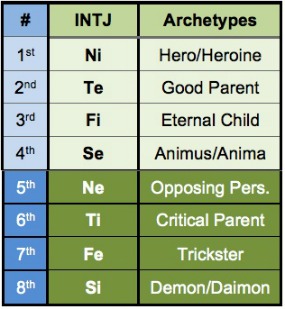
Less spectacularly, but similarly, our Homer decades ago envisioned and brought into being a successful law firm. This required him to look back at how other practices were set up, and then create his own form of practice. He also has made extensive use of extraverted thinking in a myriad of tasks, including strategizing, writing briefs, and arguing cases.
Now, later in life, Homer is imagining creating a beautiful complex of gardens, with many species planted in a variety of settings on his property. This project will call greatly upon two functions: his Heroic first function, introverted intuition, to envision it and his soulful fourth function, extraverted sensation (Se), to bring it into existence. It is at this time that Homer has two dreams on the same night.
Dream One
I talk with Sheila, a female employee at my office [an ESFP who can take care of any detail in the moment while being friendly and spontaneous with those around her]. I tell her about a client whom I can’t remember but whose voice I have mysteriously heard telling me of a vacation I might want to try. Sheila immediately knows who the client is. We then work at getting two parts of a single object back together. It involves putting four small posts back into four small holes. She does the first three posts; I do the fourth. Then we nestle together; it is cozy, not sexual. I enjoy talking and being with her.
Dream Two
I am at home with my family in the evening, when I have to go to work. My car starts okay but begins to lose power soon after I start down the road. It goes slower & slower. I see a small, beautiful cat. She looks hungry. It’s like she’s pulling the car but weakening. I know now I should have fed the cat first. I stop at a store to get cat food. The store has some. I reach into my pockets for cash. No money, I can’t buy anything.
The Eight Functions Commenting on Homer’s Dreams
Before we interpret Homer’s dreams, it is helpful to notice how each of the eight basic functions might respond to one significant part of the second one: when he sees a female cat slowly pulling his car to the office, becoming exhausted by the task. For this exercise, I treat each function as if it were fully differentiated and conscious, uninfluenced by archetypal energies.
- Extraverted sensation (Se) might merge with the image and exclaim, “Whoa! That is one beautiful, strong cat,” and want to pet the magnificent creature.
- Introverted sensation (Si) might say, “A cat cannot pull a car. This is not real.” Here, the facts of the dream do not match the internalized facts.
- Extraverted thinking (Te) might say, “It would be better if Homer had fed the cat before starting to drive,” using clear language to lay out a better plan.
- Introverted thinking (Ti) might say, “That’s a sublimely inefficient mode of transport,” dryly identifying the problem and revealing the Ti search for a logical solution.
- Extraverted feeling (Fe) might express current collective values by asking, “Shouldn’t we call the Animal Rights League? We must not permit the abuse of cats.”
- Introverted feeling (Fi) might say, “The poor cat! I wouldn’t want to pull that car; I hope the cat’s okay,” expressing how “I” would feel if “I” were walking in the cat’s paws.
- Extraverted intuition (Ne) might imagine into the immediate future, “I reckon Homer will soon be either taking a cab to his office or walking back home.”
- Introverted intuition (Ni) might find a remote analogy, such as, “I see the mice pulling the pumpkin in Cinderella. Is the cat Homer’s princess-within?”
ENFJ Meryl and her Dream
Meryl is a 60-year-old therapist who works with families and with individual adults and children; a wife who is happy in her second marriage; and a mother of three healthy, adult children. When they were younger, Meryl held regular meetings to work through issues within the family. Recently, she has felt compelled to take care of two older relatives as they have moved towards death. She writes regularly and likes to read books.
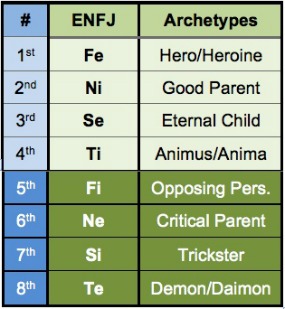
Similarly, on a more modest scale, our Meryl has persuaded clients and relatives to resolve conflicts so that family and community are enhanced. This natural fluency in conflict mediation for her family and the families she works with shows her heroic extraverted feeling. Furthermore, the imagination that Meryl uses as she refers to stories and literature shows her parenting introverted intuition working to help others see the points that she is trying to get across.
Dream
I am in a treatment center. Its vibration is like that of a hospital, but its appearance is like that of a home. There are concerns about a young man who was just admitted. I enter the room as others lay him down on a bed. I at first just observe. The other people are saying they see no change in his condition. I simply stay with him. He is in his mid-30s, tall, thin, and has dark hair. He is despondent and non-communicative, staring out the window. I sit with him. Sometimes, over time, I read him poems from Robert Frost and T.S. Eliot (maybe from the “Four Quartets”). I notice he changes a little when I am reading to him; he seems to listen to what I am reading and is more present.
[A few days must pass, then there is the following scene.]
The doctor, a woman, enters. She says, “We don’t know what to do with him.” (In effect she is writing him off.)
I suggest, “Maybe [psycho]therapy would help.”
She asks, “What good would that do?”
I say something like, “It’s been known to help.”
She writes on his chart “2 times per week,” says to me, “You watch him,” and throws the chart on the bed as she walks out.
The Eight Functions Commenting on Meryl’s Dream
Just as we have seen how the eight functions might comment on a critical aspect of Homer’s dreams, so too we can see how they might comment on a salient event in Meryl’s dream: her reading of T. S. Eliot’s poetry to the hospitalized and mostly unresponsive young man. How might each of the eight basic functions respond to that event? Here, again, I treat each function as if it were fully differentiated and conscious, uninfluenced by archetypal energies.
- Extraverted sensation might say, “We are out of here! This place is sooooo boring. Let’s take the young man outside. That is what he’s staring at.” Se wants to engage the outer world in its juicy details.
- Introverted sensation might say, “How do we know it wasn’t just her voice that got his attention?” Si relentlessly fact-checks—which is very helpful with accounting, engineering, construction, and sometimes with dream work.
- Extraverted thinking might say, “Look at what gets results: Meryl reads poems to the man and thereby draws his attention.” Te is results-oriented and uses simple language to achieve a goal.
- Introverted thinking might say, “T. S. Eliot’s eloquence turns the young man’s head, as does she,” cleverly and succinctly describing the situation.
- Extraverted feeling might say, “By reading the young man poetry, Meryl is attending to his needs and taking his mind off his suffering.” Fe thus expresses the collective’s sense of right action in this situation.
- Introverted feeling might say, “I certainly would love hearing her read T. S. Eliot to me.” Fi climbs into the skin and feeling of the young man, despondently lying in bed.
- Extraverted intuition might say, “I can see that this young man will soon get well, and maybe give Meryl something in return.” Ne imagines or “sees” into the near future.
- Introverted intuition might say, “As in Beauty and the Beast, Meryl is caring for the masculine who is rejected by others.” Ni looks inside for the remembered analogy from far away in time, place, and source.
Comparison of Homer and Meryl
If we put these two individuals side by side, we see a number of contrasts but these are symmetrical contrasts: Homer versus Meryl, man versus woman, INTJ versus ENFJ. Homer is interacting with a female assistant and a female cat in his two dreams while Meryl interacts with a male patient in her dream. The feminine in Homer’s dreams connects to more Sensate activities—fitting pegs into holes, nestling, pulling a car, needing food for energy, and lacking cash—while the masculine in Meryl’s dream connects to Thinking activities—reciting the brilliant words of poets Robert Frost and T. S. Eliot.
Beebe’s Archetypes in Dream Imagery
One final step that we can take before looking more carefully at Homer’s and Meryl’s dreams is to review the eight archetypal energies that populate Beebe’s type model, and see how they tend to appear as figures or images in dreams.
#1 Hero/Heroine: This archetype accompanies our top function, what we can do even at three a.m. It performs so heroically or inexplicably well that it seems as if it is a gift from the divine. In dreams, this function is usually carried either by the dream ego (the “I” of the dream), or by a person of the same gender as the dreamer who is in a superior position, e.g., a CEO, Mayor, President, Principal, Archbishop, King, or Queen. In its negative form, it can manifest as a despot or tyrant.
#2 Parent (Mother/Father) (Beebe, 2004, p. 94–95, 101–102; Beebe, 2005, pp. 35-36): This is the mothering function in a woman, the fathering function in a man. We ably mentor or take care of others with this function. It does not work as well for helping ourselves. Mama or Papa sacrifices self for child. Look for a mother or father of the same gender as the dreamer carrying this energy in a dream. This is usually a serious and instructive or guiding figure in the dream, helping or directing others. In its negative form, it can be the overbearing “mama bear” or “papa bear.”
#3 Puella Aeterna/Puer Aeternus (Eternal Child) (Beebe, 2004, p. 94–96, 102–104; Beebe, 2005, p. 36): This is the first seriously weaker function. It allows us to play like a child, but we also tend to tire and fall apart like a young child or teenager if we exercise this function too long. Like the child, we tend to overestimate our abilities in this function. In dreams, it is usually carried by a boy if the dreamer is a man, a girl if the dreamer is a woman. In its positive form the child brings play and delight; in its negative form it can be petulant, temperamental, or lazy.
#4 Anima/Animus: The inferior or Soul function (von Franz, 1971, pp. 1-21) needs to be developed for oneself in the second half of life. With its development comes animating or soul energy for the person. In dreams, look for a contrasexual figure (gender opposite to that of the dreamer) that is ugly, wounded, worn-out, less-than or in some other way inferior. Often in dreams this figure either needs the dreamer’s help or offers the dreamer help. This figure is usually connected with the 4th function of the dreamer’s personality type.
#5 Opposing Personality (Beebe, 2004, pp. 107-109; Beebe, 2005, p. 37): This archetypal energy is also carried by a contrasexual figure. In literature it is represented by the great impossible love figures: e.g., Tristan and Isolde, Heathcliff and Catherine in Wuthering Heights, and Rick and Ilsa in Casablanca. In a dream this figure is likely to be either highly attractive or off-putting to the dreamer, or alternating between the two. The figure will probably be carrying the dreamer’s fifth function within the dream. Whereas a sexualized relationship with the Anima/Animus in dreams is rare in my experience, a sexualized relationship with one’s Opposing Personality in dreams is not uncommon.
#6 Witch/Senex (Beebe, 2004, pp. 103, 109–111; Beebe, 2005, p. 37): This sarcastic, biting, attacking inner critic in our dreams usually appears as one of our own gender and is connected to our sixth function. It can appear as a positive fairy-godmother/godfather-like figure who offers us just what we need, but it is the negative form that we need to prepare ourselves for. Such a figure puts us in a freezing or frozen, imprisoning or imprisoned, paralyzing or paralyzed place, and it turns out that we often have such an experience when we exercise the 6th function of our personality type, or when someone else exercises that function around us.
#7 Trickster (Beebe, 2004, pp. 108-111; Beebe, 2005, p. 37): This archetype is a favorite figure for Jung. It can be bisexual or gender-shifting. The energy can be confusing, paradoxical, unsettling, liminal, quixotic, magical, confounding, or transformative. Dreams with this figure are likely to make us uncomfortable, at least initially. This figure is connected to the 7th function of one’s personality type. It might take the form of a man who becomes a woman, a woman who becomes a man, or a woman who looks “manly” or a man who looks like a woman.
#8 Demon/Daimon (Beebe, 2004, pp. 106, 109, 111–112; Beebe, 2005, p. 37 & n. 3 at p. 39): I personally associate the Devil with the Demonic (that figure or energy which tends to undermine or destroy us and those whom we love); and I associate the “Good God” with the word Daimonic (that figure or energy which tends to connect us to the Self and to benefit those whom we love). One’s 8th function with its Daimonic/Demonic energy tends to lead us into heaven or hell, into a transcendent moment or personal (and maybe communal) devastation. Look for a figure carrying this sense of ultimate doom or life enhancement in your dreams and see if it is not expressing itself through the 8th function of your personality.
At this point, we can come back to Homer and Meryl, and map their personalities onto the eight-fold model.
Mapping Homer’s Sequence of Functions and Archetypes
Considering the archetypal energy of each function in an individual’s type code enables eight insights into an individual’s character. Homer’s INTJ type manifests in his life in the following ways, each of which shows the marriage of the function to the archetype:
- His Heroic Ni envisioned a new law firm and may envision gardens.
- His Parental Te advises about the law and writes with great clarity.
- His Child-like Fi is either playful or petulant and demanding in his feelings.
- His Animated Se can be soulful in gardening and hiking.
- His Oppositional Ne is both drawn to and put off by women with strong Ne.
- His Senex Ti freezes others with unusual philosophical terms.
- His Trickster Fe confuses and is confused at social events.
- His Demonic Si risks wrecking a project with others by micromanaging it and them.
Let us see how this particular eight-function view of Homer helps us interpret his dreams.
Dream Imagery of Homer’s Se Anima
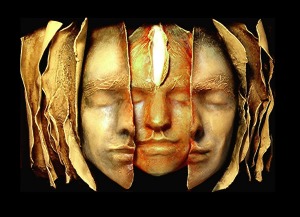
But psychological type from a depth perspective can show us even more. Everything Homer is doing in the first dream that is bringing him into a soulful connection involves extraverted sensation, which is Homer’s #4, inferior or Soul, function (see Figure 1, above). In this first dream he is picturing a lovely vacation place, interacting with Sheila in a sensate way by putting back together several parts of an object, following her lead even though she is his employee, allowing her to serve him and then helping her, and finally nestling with her in a non-sexual way. This brings him happiness.
In the second dream, everything that goes wrong for Homer involves his failure to honor his extraverted sensation and the feminine, including: returning to the law firm to do Thinking work, not noticing the cat in the first place, not feeding the cat, not having money to buy food for the cat, and not unharnessing the cat from the car. In each instance he is overlooking important Sensate details in the outer world. His heart is partially in the right place. He realizes he should have fed the cat and he tries to get her food. But where is that part of him that asks, “What am I doing asking a cat to pull my car? I should be staying at home, petting the cat, feeling her wonderful fur and listening to her purr.” All these are sensate activities.
And psychological type can take us even further. In the first dream, when he is in much better relationship with his Anima and extraverted sensation, she appears in the form of a woman. But, when he is disconnected from his Anima and extraverted sensation and pushes too hard with his #2 extraverted thinking function, i.e., thinking like a lawyer, his Anima appears instead as a female cat. In general, I tend to think that the closer the Anima figure is in species and age to the dreamer, the better is his relationship with his Anima, at least at the time of the dream.
Thus, looking forward, I could confidently encourage Homer to follow his desire to create complex gardens, as well as to continue his long hikes in nature. He also needed to devote less time to work at his law firm. Psyche was clearly sending this message. In the real world, as it actually played out, these two dreams became like the twin lighthouses at the entrance to a harbor, showing Homer how to proceed and how not to proceed if he wanted to reach land safely. This dream showed him the way over the next few years as he transitioned to working fewer hours at the law firm and then to happy retirement, and as he created the gardens.
Notice that it is the knowledge that he is an INTJ, that he has Se in his #4 Soul function, and that creation of complex gardens will draw on Se that allows us to reach this conclusion. There is no mention of creating gardens or gardening in either dream. We are able to make the leap to them when we combine his conscious passion for creating the gardens with his two dreams: the first loaded with Se activity that makes him happy and the second with Te activity (getting to and working at the law firm) that leaves him stranded. In other words, the type model helped Homer read the dream well and choose wisely.
Mapping Meryl’s Sequence of Functions and Archetypes
At this point, we can return to Meryl. Her type, ENFJ, with its unique marriage of functions and archetypes, manifests in her outer life in the following ways:
- Her Heroic Fe tries to move her family toward harmony and peace.
- Her Mentoring Ni teaches through images and stories.
- Her Childlike Se will paint, garden, cook or take hikes for fun.
- Her Animated Ti soulfully reads and writes.
- Her Oppositional Fi finds herself drawn to men who share their feelings.
- Her Witch-like Ne might see the near future darkly.
- Her Trickster Si gets confused around taxes and bookkeeping.
- Her Demonic Te could undermine those she loves by laying down the law.
Let’s see how this particular eight-function view of Meryl helps us interpret her dream.
Dream Imagery of Meryl’s Ti Animus
Although Meryl is two years younger than Homer, and thus retirement is a little further away, planning from here to there would be wise. Recall that she has had to care for two very ill relatives, which has exhausted her at times. Perhaps that is one reason why in the dream she is at a hospital, by the bed of a young man. It is he who is incapacitated. There can be little question that this man is a manifestation of Meryl’s Animus and that he can be reached through her inferior function of introverted thinking. Robert Frost was Meryl’s earliest favorite poet, and T. S. Eliot her current favorite. Eliot’s writings clearly display introverted thinking characteristics. Indeed, Eliot’s poetry is an exemplar of introverted thinking with its focus on identifying the precise words and terminology. Meryl uses introverted thinking in the dream via the words of T. S. Eliot to re-awaken the young man. It works; he is beginning to respond. His weakened state reflects the state of her introverted thinking Animus or Soul. By attending to him and leaning on T. S. Eliot’s words, she is relating to her soul. Notice that he is human, but less mature than she and in a diminished state, but she is doing the work she needs to do.
The doctor who is frustrated, and all in a huff, can be seen as Meryl’s Witch; she comes in the form of very negative and dismissive extraverted intuition, foreseeing little hope for the young man. She thus represents or symbolizes Meryl’s witch-like extraverted intuitive picture of the future—dark and negative. The Beebe model predicts that ENFJ Meryl is at risk of letting her Witch-like 6th function, extraverted intuition (Ne), discourage, deflate, and stop her. Fortunately, Meryl in this dream stands up to this negative energy and it leaves in a huff. She perseveres in using her Animus Ti function by reading aloud Eliot’s Four Quartets. Her Animus, in turn, starts to come back into relationship with her.
Meryl and I conclude that this dream is pointing her back toward regular writing done simply for herself, and to reading selections that she wants to read for herself, just as here she is reading poetry that will reach her inner wounded masculine. Literally, giving herself a half-hour to an hour each day to journal, write poems, and read favorite poetry and long-put-off novels will greatly re-energize her. In fact, Meryl set about following this regimen for herself. As is true for most of us, doing such soul work allowed Meryl to feel more centered, grounded, restored, and balanced. The dream provides a virtual prescription for her, just what she needs to do for herself, contrary to her Witch-Doctor’s negativity.
That Witch-Doctor negativity provides us with a natural segue to the Shadow and dreams that have figures from the Shadow.
II. The Shadow in Dreams: Trickster and Witch/Senex
As we turn to the last two dreamers and their dreams — INFP Phineas with his Trickster-dominated dream and ENFJ Sam with his Senex-dominated dream, it is easy to see why the term “ego-dystonic” applies to Shadow functions. In dreams where a Shadow archetype dominates, the dreamer is much more uncomfortable, confused, upset, and/or disturbed than were Homer and Meryl in their more “ego-syntonic” dreams. So too, we, as the observers of the dreamer’s Shadow dream, readily pick up on the disturbing and uncomfortable energies that permeate it.
INFP Phineas and his Trickster Dream
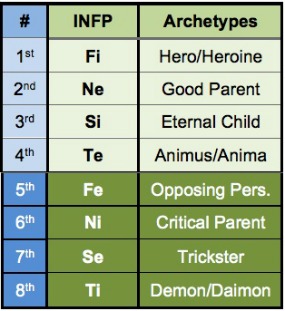
For Phineas, a 42-year-old INFP male, his Trickster Se has been activated at mid-life. INFPs tend to lead quietly by example rather than by preaching or issuing commands. Their strong sense of inner values (Heroic introverted feeling) guides them, and their ability to see the big picture in a situation in the present moment and near future (Parenting extraverted intuition) helps them see how a group can change, for example, and how the INFP might model his or her behavior so as to help the group change or transform. So it has been for Phineas until he reached his mid-life crisis.
Here is a brief sketch of INFP Phineas’ current situation and his dream. Phineas (as do many other INFPs) finds sex quite tricky. Of course, sexual activity can involve words (Thinking), values (Feeling), hunches (Intuition), as well as Sensation, but it is first and foremost a sensate activity. And when the sex is exotic or somehow forbidden, one’s shadow can be activated. Thus, while another type might find physical sexuality simply enjoyable and more straightforward, many an INFP has gotten confused, disoriented, confounded by it. Phineas, a heterosexual male, having been brought up in a conservative environment around sexual matters, is blocked from having sexual intercourse with a woman who is not his wife but with whom he has long been emotionally involved. Phineas and his wife have been separated for years, with an agreement that either might engage in sex with another partner. So, at least on the level of their marriage and mutual understanding, there is not an impediment. But Phineas is unable to go beyond merely touching his attractive partner. Then, he has the following dream:
Dream
I approach a large Victorian house, and go around it to its luscious back yard. There is a beautiful naked woman sitting on a wooden rail fence. I start to have sex with her, I standing, she on the fence. My eyes are closed. Something is strange. I open my eyes. I realize I am having sex with a lascivious old man who is laughing. I am horrified and run away. [“When I wake up,” Phineas later reports, “I realize that it would be impossible to have sex with a man in the position we are in, but somehow I am having sexual intercourse face to face with a man who has a large penis.”]
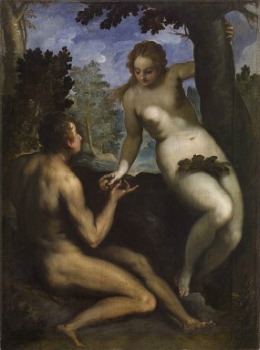
Notice, too, how much extraverted sensation dominates this dream: the complex, ornate style of a Victorian house, the luscious backyard, the beautiful woman, the physical merging with her, and even her startling transformation into a lascivious old man.
Putting together the Trickster energy and the extraverted sensation elements, what we see is that extramarital sex can be tricky for an INFP, and hence for Phineas. By analyzing the functions and their archetypal energies in the dream, he finally realized that in order to move forward in the relationship and with his life, he would have to violate (go around and behind) the overbearing and outdated rigid Victorian code (the Victorian house) that he had lived by; he would have to engage in a shadowy backyard experience (with his shadow functions) to see if this relationship with his current partner should go forward or not. In other words, he would have to take a chance, have sex, and see where it led. The dream, in fact, led to Phineas’ breaking out of the frozen place of the Victorian house and into the richer lawn of its backyard.
Ultimately, Phineas and his real-life partner engaged in sex for a while, and that helped them both realize that their relationship was not meant to go further. Both also realized that they had needed to consummate their relationship sexually in order to become clear about its limits. Phineas considered this dream a breakthrough: it helped him engage in what for him was Tricksterish behavior in order to get on with his life and see the way forward. From a Puritanical view, his decision might seem immoral. From a more holistic or Jungian view, it makes sense that at times we need to engage the more difficult parts of our personality in order to move through transitional phases. Here, Phineas, after careful introspection and reflection, engaged his Trickster Se, and it allowed the transformation needed in order for him to move forward with his life.
ENFJ Sam and his Senex Dream

With this in mind, let us look at ENFJ Sam, a 48-year-old assistant director of a non-profit that seeks to improve healthcare systems. He is good at his work and loves his job, is interactive with people at work and socially, and is in a committed relationship with an older man. He is taking my introductory course on psychological type when he gives the following example as we discuss the #6 Witch/Senex function for each type. Note that for an ENFJ, the #6 Senex function is extraverted intuition (Ne). Here is Sam’s dream and his own initial interpretation of it.
Dream
I [Sam] am doing my job when Ralph comes up and says that he is imagining a new system of delivery routes for our organization that will improve getting food to people. I lose all patience and say to Ralph, “You are the custodian, in charge of the hallways, not route-mapping. Stick to your job. Let others do theirs.” Ralph looks stunned that I have spoken to him in this way.
Sam goes on to explain: “Although this is not my actual work place or work situation, and I don’t know anyone named Ralph, I woke up, shocked by my dream behavior. The dream scene is similar to how I lost it with one of the employees at work yesterday. It seemed too much, even though she, too, was making suggestions about parts of the organization that are not her bailiwick.”
Being an astute student of psychological type, Sam can see that the function that is involved both in the dream and in his actual work life is his extraverted intuition (Ne). In each case, a subordinate at work is bringing a new idea about how a part of the organization could be improved. Extraverted intuition is forever coming up with new ideas to try.
The problem for Sam is that extraverted intuition lies at his sixth pole, the Senex function of an ENFJ male. Thus, he can become very impatient, sarcastic, or critical when new ideas come at him, particularly if it is a busy time. Fortunately for Sam, he sees that this shadow aspect of himself is right now giving him problems. He also gets it that the problem lies more with him than it does with either his female colleague at work or Ralph in the dream. Sam uses the type class to realize that the particular function that is likely to trip him up in this way is extraverted intuition. Sam sets about trying to be more open around the expression of unexpected new ideas from others, and he recognizes that this will be very hard work, as is most Shadow work that we do on ourselves.
It is worth noting two other points, which go beyond Sam’s learning for himself. One is to contrast the energy of the Senex within Sam with the Trickster energy in Phineas. You can clearly feel just how different are the energies of the two different archetypes. The Senex is cutting, critical, withering, and tends to stop cold whoever is on the receiving end; the Trickster tends to confuse and leave one ambivalent, caught between two not very good options.
Finally, if we contrast the negative Senex energy around Ne that arises in ENFJ Sam’s dream with the negative Witch-Doctor energy around Ne in ENFJ Meryl’s dream, we see that in Sam’s dream he has become identified with that Senex/Witch energy. He himself is acting like a Senex as he cuts off Ralph. In Meryl’s dream, she is standing up to the negative Witch energy in the Doctor, who sees no hope for the young man. Meryl is about 15 years older than Sam and has more detachment from the archetypal energy of the Witch/Senex and more ability to hold her own against it. Indeed, she gets her way with the Witch-Doctor, who leaves in a huff. Being younger and earlier in his journey of recognizing his Shadow aspects and confronting them, Sam himself is taken over by the Senex-like Ne. It is running him. That is typical for most of us until we fully confront our Shadows. It is a dream like this that shocks us into recognition of a Shadow aspect, and gives us the will and energy to take it seriously and begin to address it. Sam is on his way.
Conclusion
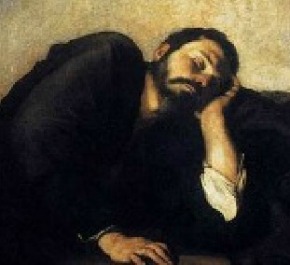
We have seen some of the benefits of taking this approach. Psychological type theory predicts that an INTJ, like Homer, is likely to be animated, grounded, and brought into balance if he regularly engages in an extraverted sensate activity for himself, like building complex gardens; while an ENFJ, like Meryl, is likely to be animated, grounded, and brought into balance if she regularly writes and reads for her own enjoyment. Bringing that kind of knowledge about type to dream work often allows dreamer and therapist to discern more precise and practical messages in dreams. It is one thing, for example, to know that Homer’s soul is appearing in his dreams and that he needs to relate to her. It is even better to see, with the help of psychological type, that Homer is being urged to spend more time at home developing his gardens. So, too, it is knowledge of type that allowed Meryl to see that her dream was calling her to return to regular periods of writing and reading for herself.
As for the Shadow functions and dreams that bring up the more difficult or “ego-dystonic” aspects of the dreamer, we see with Phineas’ and Sam’s dreams how challenging are these aspect of our lives and such dreams. The dreams often give us a “dope slap” or something more painful to try to wake us up to what is off or undeveloped in ourselves. Both Phineas and Sam are first made very uncomfortable by the experience of these dreams but then, with the help of dream work from a type perspective, each dreamer realizes what is wrong in his outer life and what needs to be changed there. Phineas needs to get past his ambivalence around having sexual intercourse with his partner in order to further test their relationship, and Sam needs to address his impatience and irritation when new ideas, particularly when they are coming from employees making suggestions outside their job descriptions.
Approaching life from outside the box can bring wonder and help us see things anew. I hope this article provides the reader with new ways to reflect on dreams, type and archetypes, and a little wonderment at how dreams can be so articulate and guiding, even as they come in such fantastic images, figures, and stories.
References
Beebe, J. (2004). Understanding consciousness through the theory of psychological types. In J. Cambray and L. Carter (Eds.), Analytical psychology: Contemporary perspectives in Jungian analysis, pp. 83-115. New York: Brunner Routledge.
Beebe, J. (2005, Winter). Evolving the eight-function model. Association for Psychological Types Bulletin, Winter, 2005, 34-39.
Jung, C. G. (1923/1976). Psychological types. Trans. R.F.C. Hull. Princeton: Princeton University Press.
von Franz, M-L. (1971). The inferior function. In M.-L. von Franz & J. Hillman, Lectures in Jung’s typology, pp. 3-88. Dallas: Spring Publications.
Images
Henri Rousseau, “Le Rêve,” 1910. Courtesy: Museum of Modern Art.
Lauren Raine, “Anima Animus Shrine,” 2003. By permission of the artist/copyright holder.
Pietro Mera, “The Fall of Man,” Circa 1600-1610. Courtesy: Walters Art Museum.
José de Ribera, detail from “Jacob’s Dream,” 1639. Courtesy: Prado Museum.



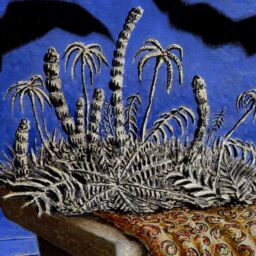
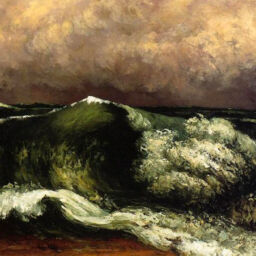
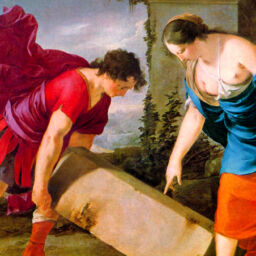
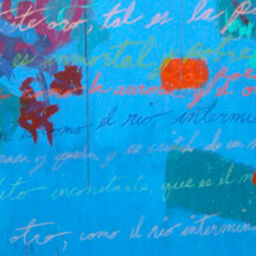
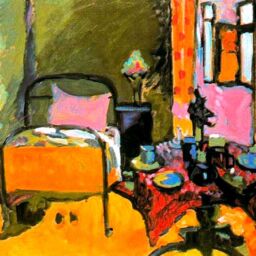
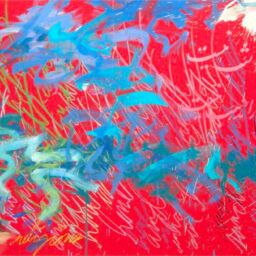
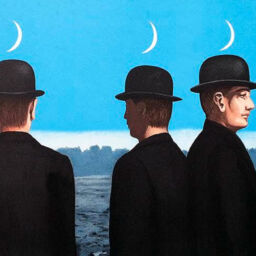

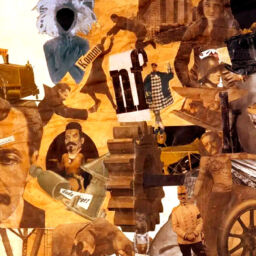


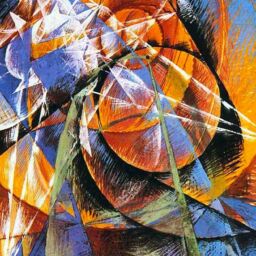

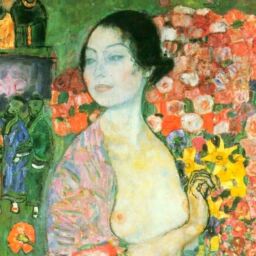
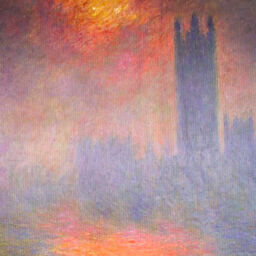
[…] https://typeindepth.org/2014/10/type-and-archetype-in-dreams […]
I really have to disagree. While the Ni vs Ti ego is debatable, I really don’t think people know Jung’s type better than the man himself. He discovered and developed this model of personality types. It seems apparent that he would understand himself extremely well to have fished up so much unconscious content from his own mind.
[…] https://typeindepth.org/2014/10/type-and-archetype-in-dreams […]
I’m really intrigued by the exercise of asking how each of the eight functions might react to the most critical element of the dream.
I like to feel that I am being thorough when I confront and analyze what is most surprising in my dreams. This method seems very thorough but also very time-efficient, so it appeals to two different aspects of my native introverted sensation orientation!